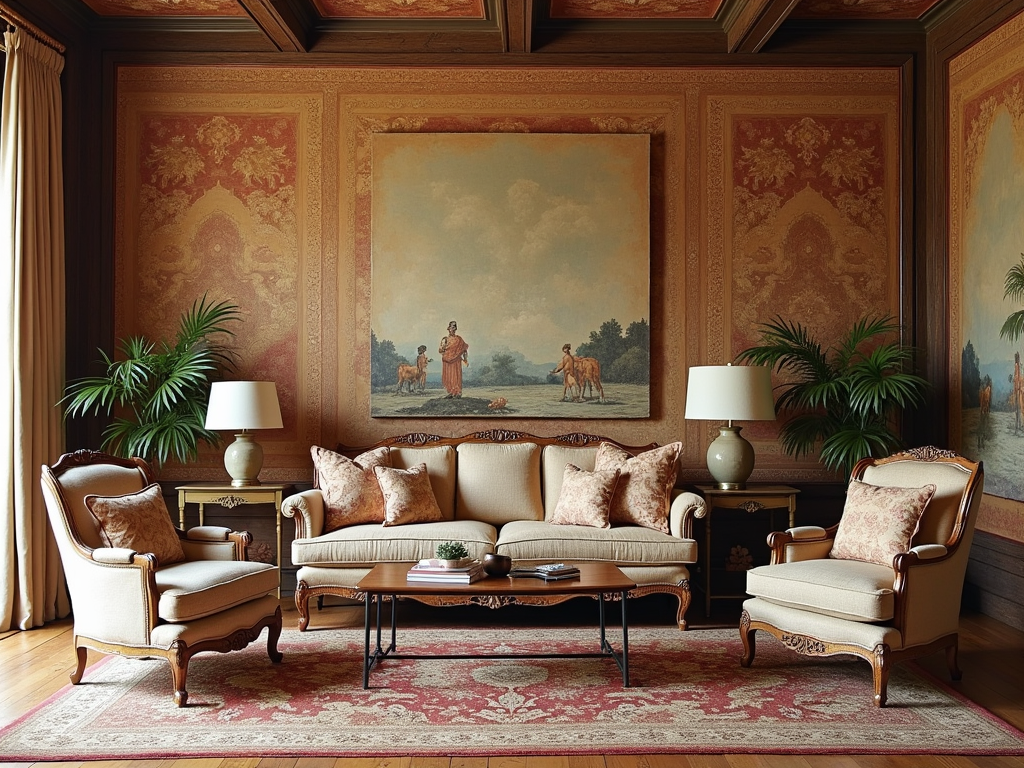Quick facts
Can't find the answer you're looking for? Please get in touch with our friendly team.
Why do people have tapestries in their room?
People use tapestries in their rooms for various reasons, including adding color and texture to the decor, providing warmth and insulation, and serving as a focal point or artistic expression. They can also help reduce echo and improve acoustics in a space.
Why are tapestries so expensive?
Tapestries are often expensive due to the labor-intensive weaving process, high-quality materials like wool or silk, and intricate designs. Many are handmade by skilled artisans, which adds to their cost. Additionally, historical or unique pieces can significantly increase their value.
What was the main purpose of the tapestries?
The main purpose of tapestries was to provide insulation and warmth in large, drafty rooms. They also served as decorative art, telling stories or showcasing scenes, enhancing the aesthetic appeal of interiors while reflecting the wealth and status of the owner.
Do tapestries have a meaning?
Yes, tapestries often carry meanings related to their designs, symbols, and historical contexts. They can represent stories, cultural heritage, or artistic expression. In home decor, they add warmth, texture, and a focal point, enhancing the overall aesthetic of a space.
What is the definition of a tapestry?
A tapestry is a piece of fabric art, often woven with intricate designs and images. It serves both decorative and functional purposes, commonly used as wall hangings or furnishings to add color and texture to a room's interior design.
What are tapestries?
Tapestries are decorative pieces of fabric art, often woven with intricate designs. They can serve as wall hangings or room dividers, adding color and texture to home decor. Historically, tapestries were used for insulation and storytelling, making them both functional and artistic.
What is tapestry?
Tapestry is a form of textile art, traditionally woven on a loom, used for decorative purposes in home decor. It often features intricate designs or scenes and can be hung on walls or used as upholstery, adding warmth and character to a space.
Category Overview
Introduction
Tapestries transform a house into a home, infusing spaces with warmth and personality. They serve not just as decorative elements but also enhance comfort and ambiance in everyday life. Whether draped on walls to create a cozy atmosphere or hung above furniture to tie a room together, tapestries play a pivotal role in elevating your living space. Their soft textures can soothe the eye and spirit, making rooms more inviting for relaxation and gatherings.
Functionality
The primary functions of tapestries go beyond mere decoration. They can act as sound absorbers in your living room, creating a quieter environment for conversations and movie nights. In dining areas, larger tapestries can serve as beautiful backdrops that elevate dining experiences. Outdoors, lightweight options can provide shade or define spaces during garden parties. Unique features like adjustable hanging systems add versatility, allowing you to shift them based on seasonal decor or personal preference.
Design & Style
Tapestries come in an array of styles and materials that cater to diverse tastes. From intricate woven patterns to minimalist designs, you'll find options in cotton, linen, or even silk blends. Common variations include bohemian prints that bring vibrancy to eclectic spaces or classic floral designs perfect for farmhouse aesthetics. You can easily personalize them to match your decor theme—think muted tones for modern homes or bold colors for rustic settings. For those seeking compact solutions without sacrificing style, tapestry wall hangings are the best choice for small apartments while maintaining visual impact.
Practical Considerations
Selecting the right tapestry involves several key factors: consider your room's size—larger pieces work well as focal points in spacious areas while smaller ones are ideal for cozy nooks. Think about the material’s durability; heavier fabrics might be suited for high-traffic areas where wear is expected, while lighter ones may suffice in low-use spaces such as bedrooms. Avoid common mistakes like choosing colors that clash with existing furnishings; instead, opt for complementary hues that enhance your overall theme.
Comparison and Alternatives
When it comes to materials and styles of tapestries, each option has its merits: Fabric (e.g., cotton vs. synthetic): Cotton is breathable and softer but may require more upkeep than synthetic options. Patterns (e.g., geometric vs. organic): Geometric patterns lend themselves well to modern themes while organic designs suit boho or rustic styles.Deciding between these depends on your room's overall aesthetic—if you favor clean lines and minimalism, geometric patterns may be preferable over intricate florals.
Trends and Popular Items
Currently trending in tapestry design are large-scale prints featuring abstract art or nature-inspired motifs that resonate with the indoor-outdoor living trend. Bohemian-style tapestries remain popular due to their vibrant colors and eclectic appeal; these often feature fringe detailing that adds texture without overwhelming simplicity in decor themes like Scandinavian minimalism. As you explore options for beautifying your walls or creating focal points within rooms, keep an eye out for customer favorites that resonate with contemporary tastes. In summary, whether you’re looking to enhance comfort through texture or add unique design elements reflective of your personal style, tapestries offer endless possibilities tailored to fit seamlessly into any home setting.


